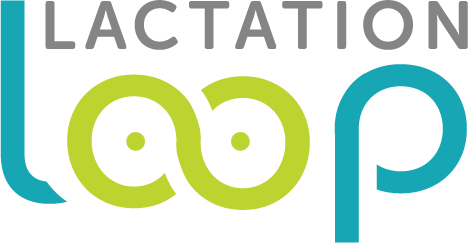Breast Care: Engorgement, Clogged Ducts, Mastitis.
Engorgement
This is a natural process after giving birth. It’s the fourth stage of pregnancy and marks the beginning of lactogenesis; the production of breastmilk for human babies. Engorgement does not mean full of milk, it means the breast tissue is swelling to prepare for production. It’s been awakened hormonally and knows it has a job to do! The best treatment for engorgement is to feed your baby on demand, rest and hydrate as much as possible. Avoiding cracked nipples is a good idea as well because any crack in the skins integrity can allow bacteria to penetrate the tissue and cause mastitis. To do this, applying a warm compress and hand express before latching. This will soften the area allowing the baby to achieve a deeper latch. Heat, warm compress for a few minutes before or during latching or pumping, then ice the breast, about 15 minutes afterwards if needed for severe discomfort and to prevent further growth. Be cautious, too much ice can reduce supply, so stick to icing as needed, once symptoms have become manageble stop. Many mothers are already taking an anti-inflammatory such as ibuprofen, this is helpful. If you stop taking this medication abruptly engorgement could also develop quickly.
Clogged ducts
This is a issue that typically occurs once engorgement has settled and the production of milk is fully in process. Therefore, I would not diagnose a mother with a clogged duct in the first few weeks post delivery, its likely engorgement and should be managed as above. Clogged ducts develop typically after week two and are specific to one area of the breast. Unresolved clogged ducts can lead to discomfort, mastitis and or reduced supply. A mother would know her breast is clogged when a normally draining breast stops or slows production, she develops a bleb area (white dot) on the tip of her nipple and or she has a hard round spot without fever or redness. A clogged duct may be uncomfortable, but with severe discomfort I would consider mastitis and call your IBCLC, midwife or physician for further management. They key to resolving a clogged duct is understanding its root cause. Number one problem- Interruption of routine emptying; simply stated a back up of milk from a shallow latch, ineffective pump/flange size, or development of a cyst (normal finding with lactation), mature fatty milk, tight fitting bra. IBCLC’s can help you determine your root cause and manage your clogged duct. Some basic breast care until you speak with your provider would be gentle massage and hand expression starting form the front of the clog and slowly working your way back. If you massage from the back it can irritate or stimulate the tissue causing more swelling. You can use heat while trying to drain, but then after you stimulate the area and drain, you should ice it. Both heat and ice should be used for about 15 minutes. Anything longer on either end could make the problem worse.
Mastitis
This is when the breast tissue is enflamed, swollen and painful. Typically one sided. Mother will have flu like symptoms; fever, body aches and fatigue. It is extremely important to continue nursing or pumping routinely during this time. Avoiding milk stasis which means milk not moving. Milk stasis can worsen your condition.
You can try homeopathic options discussed below for about 1 day, if symptoms persist please call your provider for an antibiotic!
During feeding or pumping: use hands on pumping techniques throughout session focusing on the front area of concern and working your way back. Do not add heat or vibration, too much massage and heat can make it worse. Be sure you have the correct size flange. Understand the flange opening should be about the size of your nipple, not the size of your areola. (Please schedule an appt with an IBCLC for correct flange sizing if needed.)
If you pump first, hand express after 10-15mins of pumping for two minutes to remove as much milk as possible and assess the area for clogs. Often hand expression can relieve a clog right away.
Ice area for 15 minutes post pump & hand expression.
For severe mastitis or pain or while waiting to obtain an antibiotic and no relief with the above interventions you could also: apply cooled green cabbage leaf that has been flashed (dip leaf in boiling water for 1-2 mins to soften) to affected area. After flashing allow it to cool for 5-10 seconds, roll up or fold to fit the exact area. Wrap breast in saran wrap or apply a sheet over the cabbage to help it sweat into the tissue and prevent staining of clothing. Avoid nipple and areola. Apply for 24-48hrs-as needed until breast begins to drain and swelling and redness have decreased.
Take ibuprofen 600-800mg every 6-8 hours for pain and inflammation.
Sleep! You must be resting, treating your body as if you have the flu. Regular errands and life must stop if possible.
Start or Continue prescribed antibiotics. If you are not feeding better within 2-3 days from use of an antibiotic; call primary care for milk culture and/or a different antibiotic.

